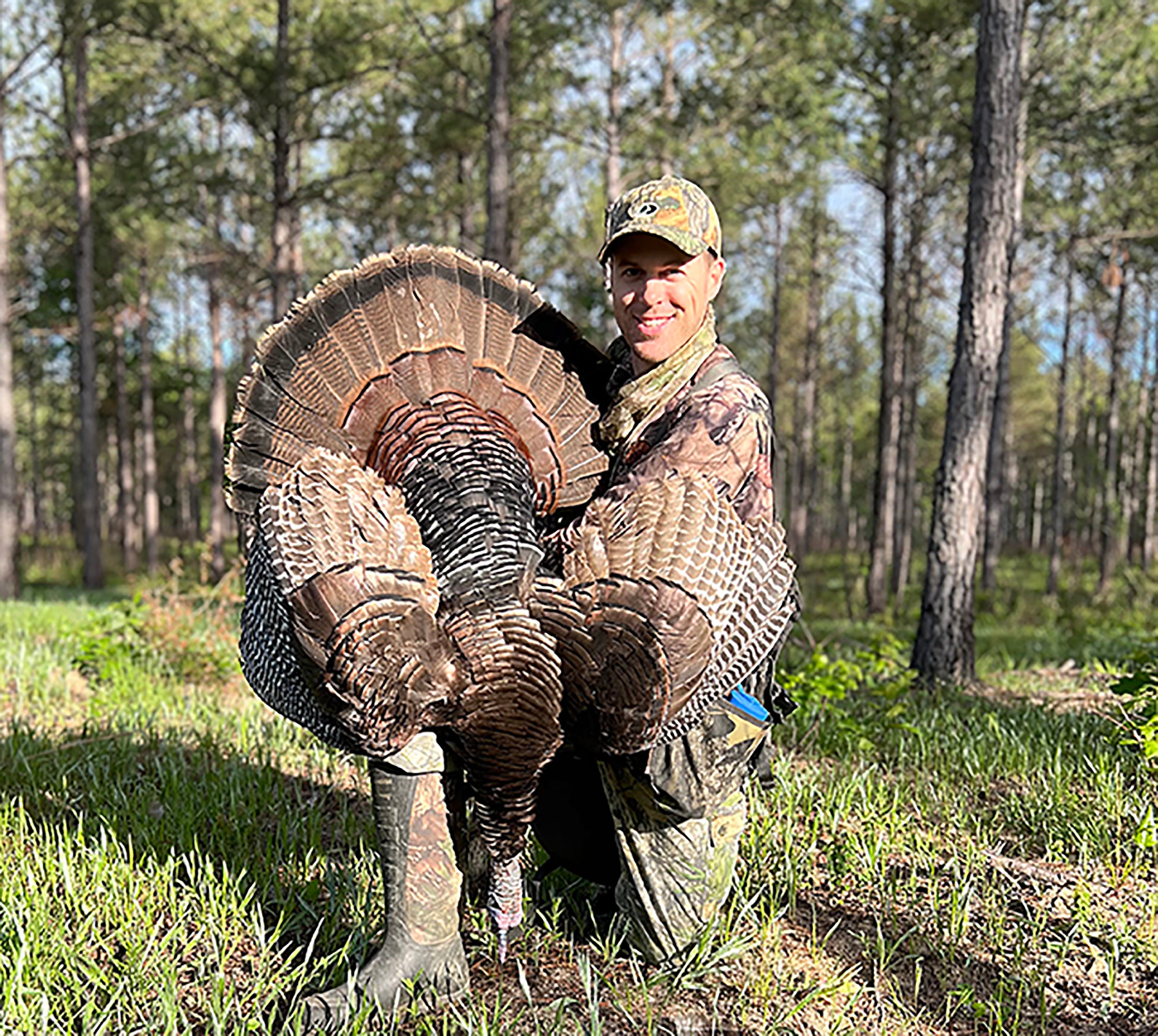By DAVID RAINER, Alabama Department of Conservation and Natural Resources
After the 2023 spring turkey season, Adam Arnold considers his transition from non-hunter to member of the hunting community complete.
Although 33-year-old Arnold has held a fishing license for many years and has enjoyed using the Cahaba Wildlife Management Area (WMA) Public Shooting Range, he had never hunted until spring of 2018, when he participated in the Adult Mentored Hunting Program (AMH). The Alabama Department of Conservation and Natural Resource’s (ADCNR) Wildlife and Freshwater Fisheries (WFF) Division had just begun the now-popular AMH program in the fall of 2017.
As a CPA (certified public accountant), Arnold was in the middle of one of his busiest seasons when he took a break from his work computer and checked his personal email. One of the emails was from an AMH hunt with photos of successful deer hunts.
“That email talked about opportunities for turkey hunting,” Arnold said. “I’d never done hunting, but I’d done a lot of target shooting. I decided to give hunting a shot. I applied for a mentored hunt. It was 10 o’clock at night, kind of an impulse thing.”
Arnold was in luck. He was drawn for the mentored turkey hunt at Portland Landing in March 2018. He showed up for the hunt with nothing but hiking boots and the shotgun he used for shooting clay targets. He did purchase a turkey choke and turkey-specific shotshells but had never fired those shells.
When he got to the lodge, he was greeted by WFF Director Chuck Sykes, WFF R3 Coordinator Justin Grider, WFF Biologist Justin Gilchrist, other WFF staff and mentors. The first order of business was a safety talk, followed by a session to pattern his shotgun.
“They put us in a realistic turkey hunting position, which was different,” Arnold said. “All my shooting had been standing up, shooting clay pigeons. I was sitting with the gun propped up on my knee. That took a little getting used to. Then we fired on the range and patterned our guns. We learned more about the anatomy of the turkey and aiming at the target.”
WFF staff then prepared a wild game feast of fried wild turkey, fried catfish and venison dishes.
“That was really cool to see the final product of what you harvest,” Arnold said.
After the meal, more instruction from WFF staff followed, and the mentees were issued the camouflage clothing for the next two days of hunting as well as several turkey calls.
“We learned more about the reverse nature of turkey hunting,” Arnold said. “You know, the gobbler usually calls the hens to him, and we’re trying to call the gobbler to the hens. We learned about the different calls turkeys make, like the yelp, cluck, purr, cackle and gobble. It was a very informative couple of hours.”
Early the next morning, Arnold went to the woods with Sykes, another mentor and another hunter, Charles Barrow. After hearing no gobbling, the group did a little scouting, and Sykes spotted turkeys in the distance. After a lunch of venison burgers, the hunters headed back out that afternoon.
The first turkey encounter was with a hen that responded to the calling as she walked a semicircle around the hunters.
“I was fascinated watching a conversation between a hen and a hunter,” Arnold said. “That’s when I got a feel for just how still you have to be, and how quiet.”
With no gobblers in sight, the hunters made a move. After getting set up, one of the mentors whispered for the group to be still. He had spotted two gobblers coming in from their right.
“My heart starts pounding a bit,” said Arnold, who was the primary shooter on this hunt. “Then these two gobblers came in in full strut. They weren’t gobbling. We wanted to try to get a double, so we waited for the turkeys to get closer. Then they came to a point and started to go back. That’s when Al (Mattox, his mentor) gave me the instructions to take it. I took my shot. Then everything was in slow motion. Then everything went fast forward and the turkey flopped.”








